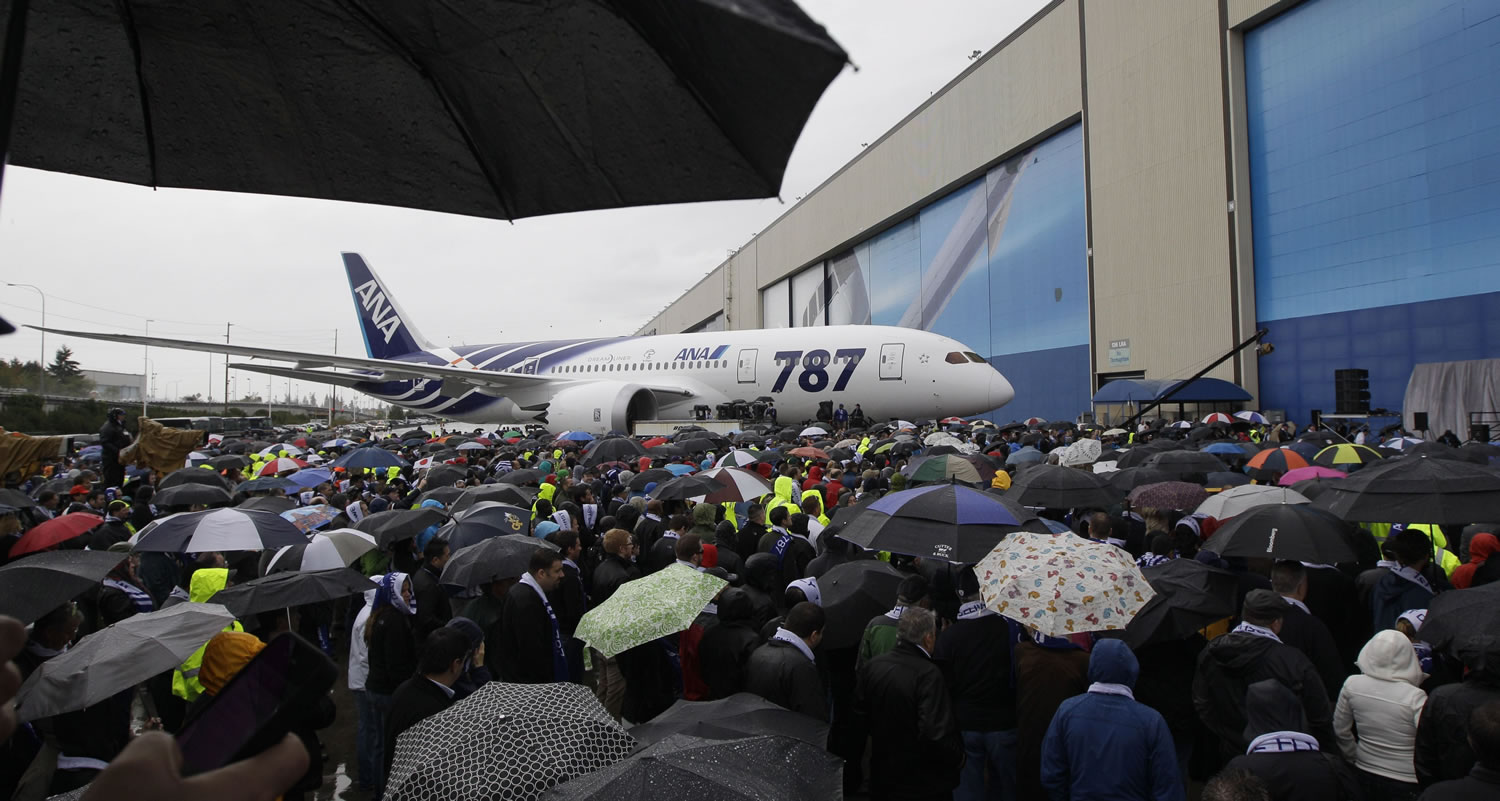EVERETT — Boeing Co. handed over the key for its first 787 wide-body jet to All Nippon Airways on Monday after years of delays, marking a long-awaited milestone in the history of commercial flight.
Thousands of workers gathered for the ceremony at Paine Field, outside the building where the planes are assembled, with many finding shelter from the rain under the wings of two yet-to-be-delivered 787s. The actual first ANA 787 was nearby at the Future of Flight aviation center, where it was being prepared for a reception Monday night and its flight to Japan on Tuesday.
The plane goes into service in November.
“You have no idea what you’ve achieved,” Boeing Commercial Airplanes chief executive Jim Albaugh told the crowd. “It’s not often in a career or a lifetime we have a chance to do something like this.”
The new jet is the first commercial airliner built using carbon fiber — a strong, lightweight, high-tech plastic — rather than the typical aluminum skin. It was supposed to be flying passengers three years ago but has been beset by production and design problems.
Airlines have ordered more than 800 of the plane that will compete with the Airbus A350.
The use of carbon fiber allowed for several other breakthroughs, including larger windows with electronic dimming rather than shades, and pressurization that’s more akin to what passengers feel at ground level. Without corrosion-prone aluminum, cabin humidity levels can be set higher, easing dry noses and throats. The lighter jet will be quieter and use about 20 percent less fuel than a comparably sized aluminum aircraft.
Albaugh handed a ceremonial key to the plane to Shinichiro Ito, president and CEO of ANA.
“Please take good care of it,” Albaugh said. “We’re very proud.”
The crowd cheered.
“I know the road that led to today was full of great difficulties,” Ito said through an interpreter. “Yet all of those challenges were overcome. … I say to each and every one of you, you have my utmost respect and deepest gratitude.”
Ito promised the plane would be carefully and lovingly taken to Japan, where people were eager to see it. He was to be on the flight.
Monday’s ceremony was emotional for many of the workers.
“When you hear about delays, they’re frustrating,” said employee Jim Conery. “But you have to turn it around and turn it into a challenge. Building airplanes is not for the weak.”
Evading the rain under one of the wings he worked on, Boeing mechanic and technician Tracy Thompson also acknowledged a mixture of frustration and pride.
“We had a lot of issues, a lot of problems, but they’re being resolved and we can see the light at the end of the tunnel, with the first one being delivered,” he said. “The investment in this airplane is taking aviation leaps into the future.”
Peter Clark, an aviation industry analyst, traveled from Auckland, New Zealand, to attend the ceremony. He called the 787’s delivery one of the four major events in the history of commercial aviation, after the development of the Boeing 707, the 747 and Concorde.
“When it rolled out in 2007, it was just a piece of plastic on wheels. This is an amazing day. I’m proud to be here,” Clark said.



